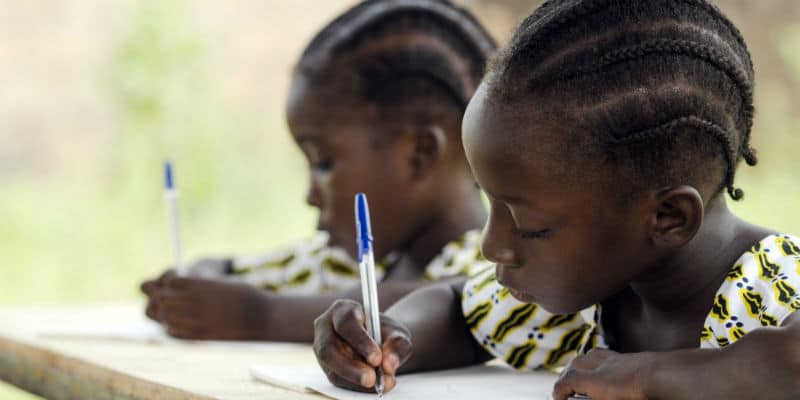I grew up in Nigeria where nearly half the population still lives in extreme poverty. But even for most who are desperately poor, education is highly valued as a majority of children—more than 70%—attend primary school and nearly half attend secondary school. Many also go on to attain higher education degrees. This push for education isn’t unique to Nigeria though; in fact, for the past two decades, free universal basic education has been a major item on the agenda of many African governments and experts in the global development industry who see it as vital to development. It was deemed so important that it became the second Millennium Development Goal, and when that goal wasn’t reached by 2015, it became the fourth Sustainable Development Goal.
Attending school may confer numerous individual and society-wide benefits: offering children secure childcare during the day, socializing young people into a community of peers, and so on. But unfortunately many schools are falling short—and in some cases failing all together—when it comes to unlocking the potential academic and economic benefits of school, and even in some of the most developed countries, career outcomes falter. Here are three indications that many universal education programs in Africa are failing.
- Many programs simply can’t accommodate the influx of students. In Ghana for instance, where the president has promised everyone access to free secondary school education, the education system is bursting at the seams. The program, which cost $74 million in its first year, still isn’t equipped to handle the tens of thousands of students taking advantage of this offer. Students must now alternate when they go to school because of capacity issues. In Sierra Leone, after free high school was introduced for 1.1 million students, many were sent home because the system couldn’t accommodate them all.
- Learning outcomes leave much to be desired. Even when the billions of dollars of investment in education infrastructure have succeeded in getting children consistently into a physical classroom, learning at most schools is very poor. Literacy and numeracy assessments show that students in low-income countries perform worse, on average, than 95% of students in high-income countries.
- Many graduates still struggle to find work. In South Africa, the most industrialized and developed African country where the government spends a higher percentage of its GDP on education than OECD countries, results are abysmal. The average secondary school graduate does not get a job until their early 30s, at which point most are parents. Many other African countries are not better. If anything, most are worse.
There are countless reasons that many of these school systems are failing, from insufficient infrastructure to a significant disconnect between schools and the local economy. Rather than continue to invest money in what are clearly broken systems, poor-country governments can improve learning outcomes and increase their students’ odds of finding employment by learning from organizations that seem to be solving the education puzzle.
Connecting education to local markets
Thousands of low-cost private primary and secondary schools are springing up across the globe and many are seeing promising results. Bridge International Academies, a network of low-cost schools, is a perfect example of this phenomenon.
These schools compete for hard earned dollars from parents and are therefore highly incentivized to create education solutions that meet parents expectations (in contrast, funding for universal education programs often isn’t based on learning outcomes). Bridge’s education programs not only leverage technology where possible, but they also develop standardized curriculum that enables the organization to ensure quality control. This has led to better learning outcomes for students that attend Bridge and some governments are taking note.
In 2016, for instance, the Liberian government partnered with Bridge to transform the country’s public education. The results have been astonishing. After an independent evaluation was conducted by two respected development organizations – the Center for Global Development and Innovations for Poverty Action – there was evidence that, just after nine months, learning had increased across the program by 60%. In addition, Bridge students were shown to learn twice as fast as other students in neighboring public schools.
But it’s not enough to nail literacy numeracy, or other subjects.
Ultimately, for many students, the primary goal of education is to expand career opportunities. To that end, education must in part be tailored to the needs of the local and global economies, and organizations such as Moringa Schools and Andela are demonstrating how it’s done. In contrast with other higher ed programs that struggle to prepare students for the economy, these organizations explicitly focus on training young people on 21st century skills necessary to become productive in today’s globalized and increasingly digital economy. For example, at Andela successful applicants go through a four-year paid training program and are placed in client-facing roles after six months. Some of Andela’s clients include Microsoft, Viacom, Github, and many other global companies.
When schools don’t deliver on their promise of academic rigor that can help graduates move up the economic ladder, mass unemployment and widespread distrust in the value of education ensue. While we can all agree that education is a critical component to economic and personal development, our goal shouldn’t be to simply herd as many students into classrooms as possible. What if we focused more of our efforts on improving learning and employment? If governments and development organizations fundamentally rethink the purpose of education, I am convinced that they will begin making education investments that bear much fruit.



